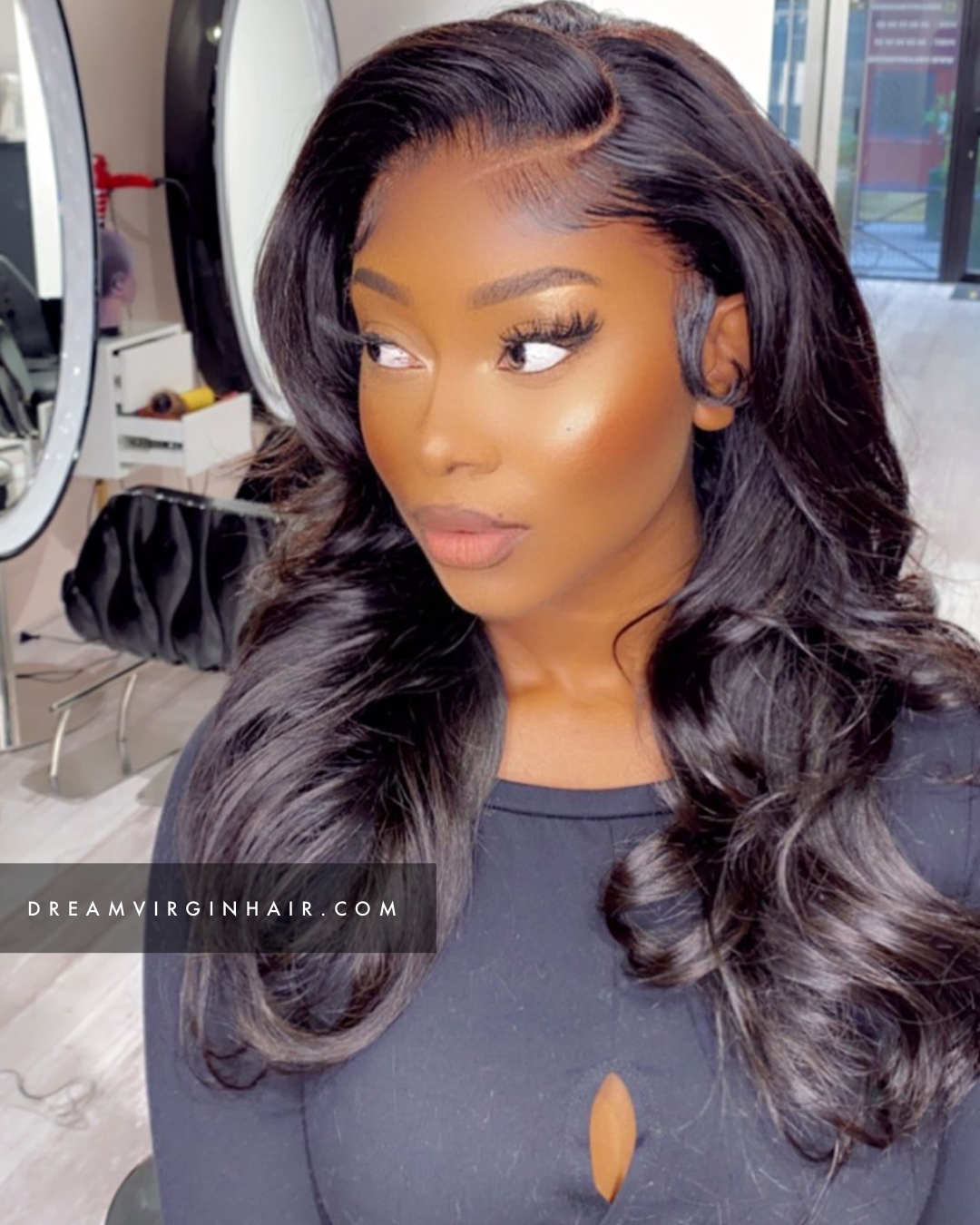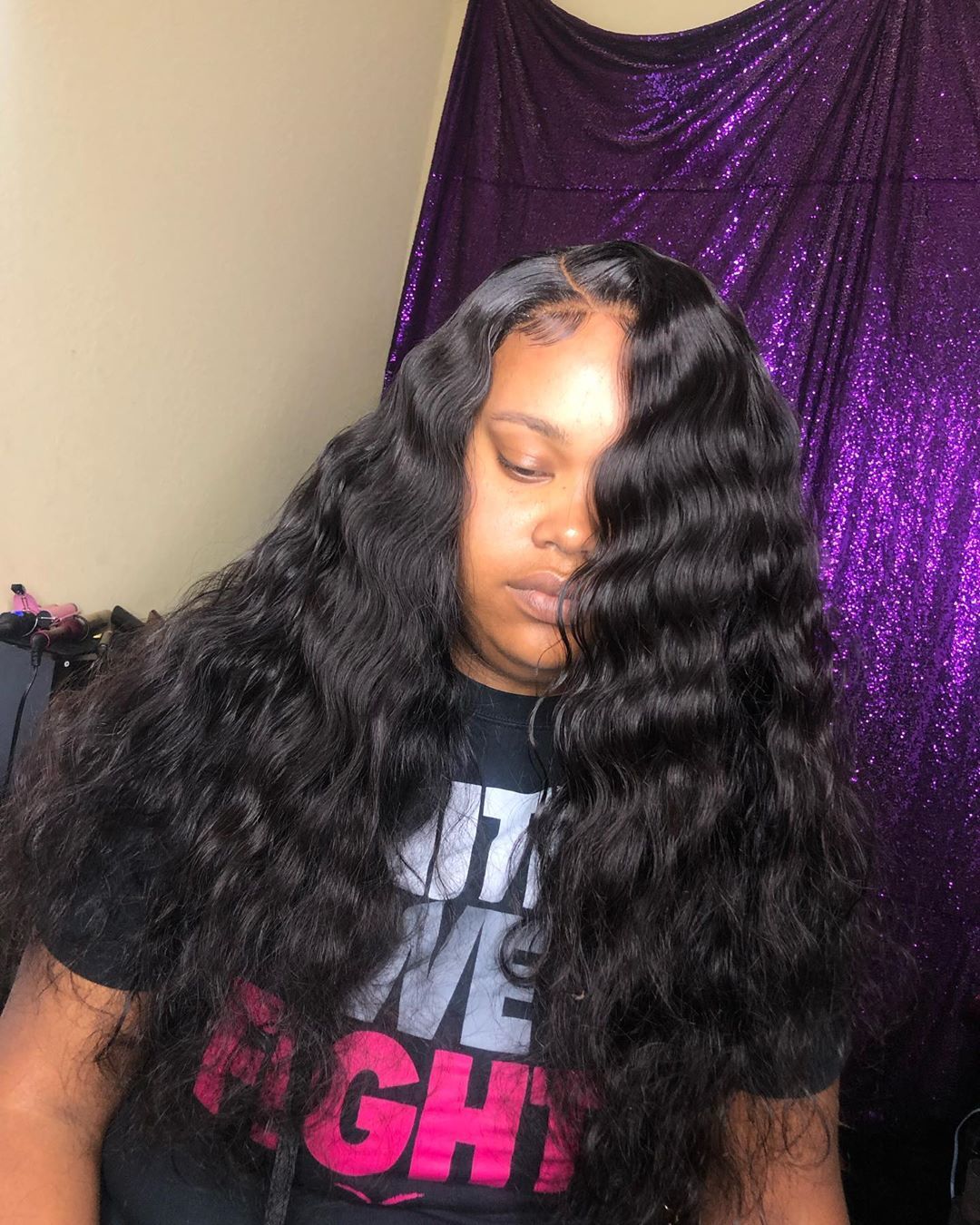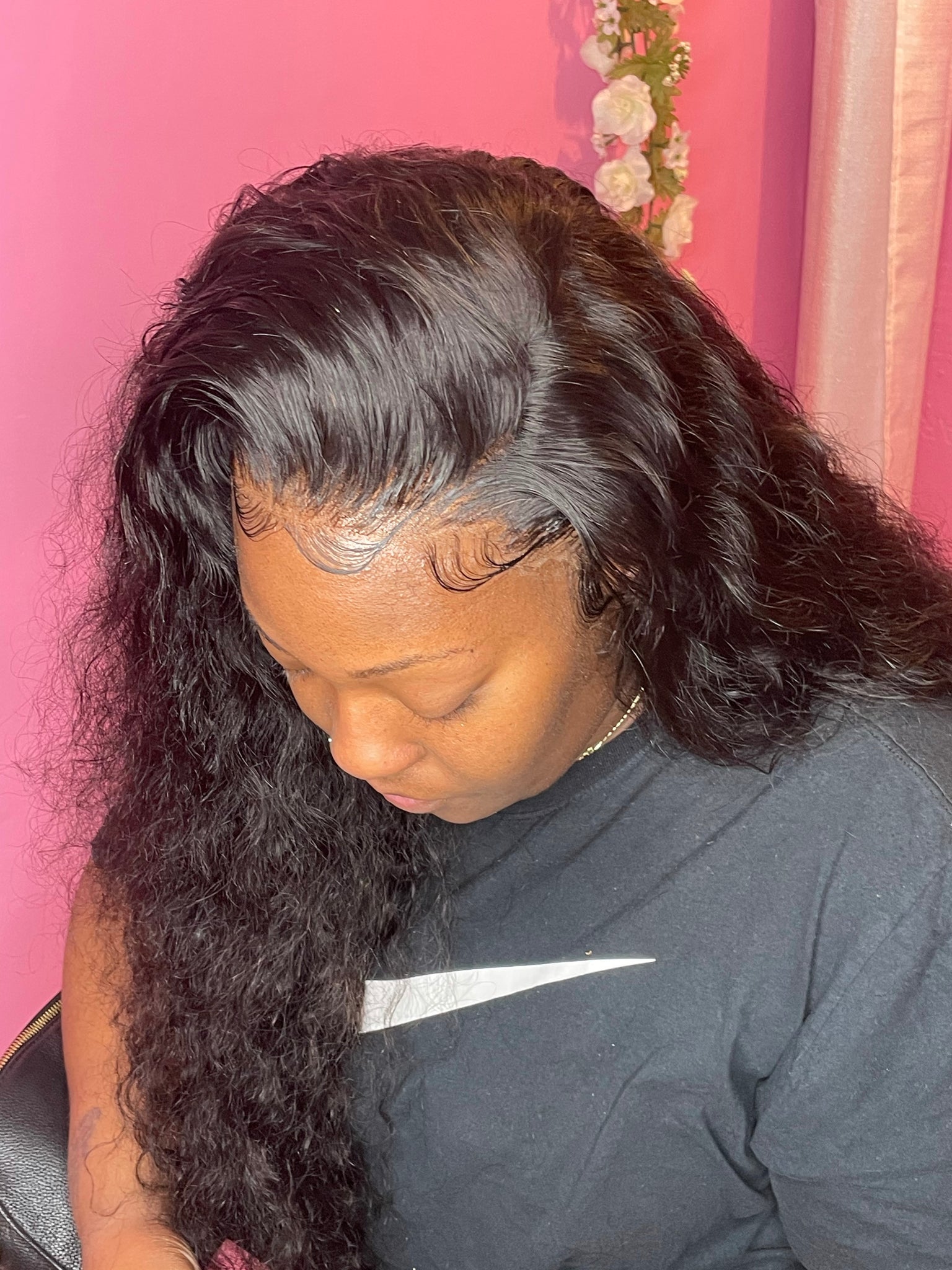Lace frontal sew ins are an ideal way to achieve a full head of weave with minimal leaveout. Additionally, they require less installation time than lace closures.

Before you begin, it’s essential to determine how many hair bundles your clients require for a realistic and full appearance. Short hair can benefit from using 2 bundles, while those with long locks should opt for three bundles.
1. Prep Your Hair
Prepping your hair for lace front sewing in is a necessary step in achieving the look you desire. There are various methods of doing this depending on your hair’s length, texture and thickness; regardless of which option you select, make sure it is as flat and even as possible before beginning any styling process.
When prepping your hair for lace front sew in, there are several products you can use. Always start by moisturizing both your hair and scalp. Furthermore, keep the forehead dry as this will help the lace front lay flatter.
Once your hair is prepped, you can begin braiding it into small cornrows. This will help secure the wig and protect any edges from damage when applying lace glue.
Once you are finished styling the wig, secure it into a stocking cap to ensure it remains securely in place and doesn’t fall out when your fingers run through it. You may also apply liquid hair protector around the perimeter of your edges to prevent pulling as you style it.
Lace frontal wigs are an econoHairEximal and natural-looking solution for women who want to save money. Additionally, these long-term solutions don’t need frequent replacements like other hair styles do.
When shopping for a lace frontal, it’s essential to find one that complements your hair color and is constructed of high-quality materials. Doing this will guarantee the wig lasts a long time and can withstand daily wear-and-tear.
2. Braid Your Hair
Braiding your hair before installing a lace front sew in is an essential step, as it creates a flat surface on which to sew the lace onto. Typically, you will braid your locks into cornrows so that you have a secure foundation from which to work.



If you don’t feel confident doing cornrows, simply part your hair in the middle and braid from one side of the head to another, leaving behind some lace at each end. Once finished braiding, secure with bobby pins or other small clips.
Once the lace has been secured, you can begin sewing the tracks in your braids. When doing so, be sure to take the needle under each braid in order to force it flat and keep everything secure against your head.
Once the lace frontal has been secured in place, trim away any extra lace and begin styling it as desired. For thicker hair types, adding extra baby hairs to the lace gives off a more realistic appearance.
There are a few different lace frontal styles, the most popular being baby hairs. While this option can be customized to your liking, it tends to be more expensive than other options available. If cost is an issue for you, clip-in hairpieces might work too; they require less installation effort and require fewer upkeep but don’t offer quite the same flexibility as lace frontals do. Furthermore, clip-ins tend to be less durable as well as producing natural oil like your own hair does.
3. Style Your Bundles
One of the greatest advantages to having lace front sew-in hair is that you can be creative with styling it. There are various options, from full head styles to small clips or wiglets; and the more creative you get with your tresses, the prettier they will appear. To maximize their full potential, know how many bundles you need and which style works best with your particular hair type.
Calculating the correct number of bundles depends on your hair length and how far apart they will be sewn in. Ideally, your longest length should be around 20 to 22 inches with several smaller bundles between 8-10 inches in width.
To achieve the best results from your lace front sew-in, it is essential to select high-quality human hair. This will be essential for multiple reasons, such as longevity and a more organic appearance. Furthermore, make sure the texture matches perfectly for your application – 3B or 4C grade would be best, preferably natural virgin hair.
4. Finishing Touches
Before installing your lace front sew in hair, it is essential to measure the lace carefully so that it fits correctly. Doing this will help avoid having it look crooked or unnatural.
Installing a lace frontal is most commonly done through sewing; however, glue or tape adhesives can also be used. Before attempting any of these methods, consult a professional stylist for guidance.
Before installing a lace frontal, prepare your hair by washing and conditioning it to make sure it is smooth and soft. Next, braid your natural hair in either an horizontal or spiral pattern so that it lays flat against your head.
Once you’ve finished this step, you can begin sewing the tracks onto your braids. Be sure to do this in a side-to-side motion so that the weave remains secure.
Once the lace front is secured, it’s time to style your bundles and add some finishing touches. Whether you prefer something sleek and polished or more relaxed, there is sure to be a hairstyle that works for you!
